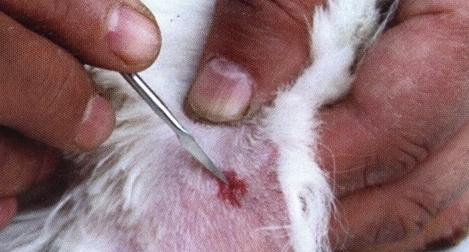
dog first aid
It is best to prepare a travel first aid kit in advance when traveling by car with your dog. The items you usually bring are: wet tissue, medical tape, gauze bandage, wound dressing, anti motion sickness medicine (diphenhydramine), hemostatic powder (Yunnan Baiyao)
Although serious accidents and emergencies occur occasionally, first aid can relieve your dog's pain and distress, and sometimes even save his life.
First of all, keep calm and don't panic. The specific accident handling methods are as follows:
Trauma First Aid:
The most common injuries are dog fight bites and foot cuts. If there is blood on the dog's fur, find the bleeding area, and touch the hair clumping (blood clot) if the bleeding is not obvious.
Remedy:
1. Cut the hair if necessary to expose the wound.
2. Use gauze to press to stop bleeding, and use Yunnan Baiyao powder to stop bleeding.
3. Tie the straps if necessary.
4. In the event of shock, deal with it according to the method of dealing with shock.
5. Contact the nearby veterinarian for emergency treatment in time.
This is usually caused by the thorns on the paws of the dog's affected limb. Please stroking the paws of the dog carefully and pull out the thorns to recover.
First Aid for Drowning:
As soon as the dog is ashore, the water in the lungs is drained as soon as possible.
Foreign body in the eye and throat:
Foreign objects in the eyes: stop the dog from scratching the eyes, wrap the paws with cotton or cloth if necessary, hold the dog tightly, and the other person uses the index finger and thumb to open the eyelids. If foreign objects have been inserted into the eyes, do not touch them immediately
Foreign body in the throat: When there is a wood chip or ball stuck in the throat or trachea, the dog will have difficulty breathing and will die if it is not removed in time.
There are not many cases of dog poisoning. Dogs are not as good as cats in screening food and sometimes ingest harmful substances. Dogs also lick the harmful substances on their hair. The signs of poisoning are:
1. Acute vomiting
2. Exhaustion
3. Rapid muscle twitching
4. Stiff
5. Weak
6. Bleeding
What to do:
1. If the hair is contaminated, please rinse the hair to prevent more harmful substances from entering the dog.
2. Immediately contact the nearby pet hospital.
3. If you know that the dog has swallowed those things, bring these things and the container to the veterinarian.
If the veterinarian asks you to vomit the dog first, it usually only works if the dog vomits within 30 minutes of eating the poison.
When a dog is in shock and exhausted, quick and appropriate action can save the dog's life. The reasons for the exhaustion are:
1. Seizures.
2. Acute infection.
3. Heart disease.
4. Poisoning.
5. Diabetes.
6. Heat stroke.
7. A car accident.
8. Bleeding.
Management of shock and exhaustion:
1. Treatment of shock: During shock, blood pressure is lowered, heartbeat and breathing are fast and weak, and the skin is pale and clammy.
2. Check breathing: If breathing is weak, irregular or stopped, please:
a. Untie the collar.
b. Dig the mouth.
c. Exclude saliva, blood, vomit or any foreign body in the mouth.
d. Do mouth breathing.
3. Check the pulse: If the pulse cannot be measured, the heartbeat can be directly detected on the left side of the chest near the back of the elbow.
4. Contact the nearby pet hospital.
Artificial respiration:
1. Remove any fluid or foreign body from the respiratory tract, open the mouth, and pull out the tongue.
2. Put your hands on the rib area of the chest and press down to squeeze the air out of the lungs. Immediately release the hands, so that the chest bounces back to its original position, the lungs expand, and the air is inhaled.
